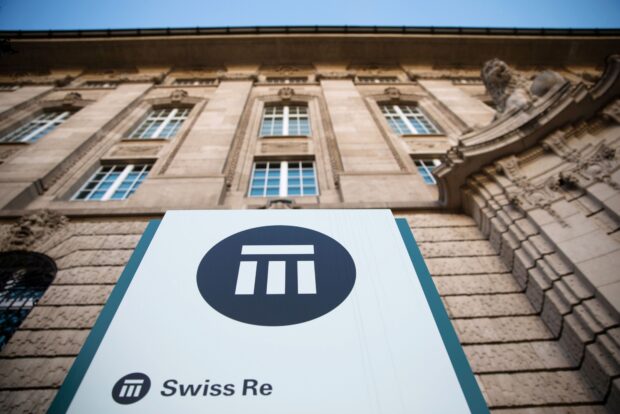Swiss Re announced plans to withdraw from its digital B2B2C insurance business, iptiQ, following a strategic review.
The iptiQ business lost $250 million in 2023, but the loss was projected to be less in 2024. Nevertheless, Swiss Re decided its capital would be better used for its core activities, according to John Dacey, Swiss Re’s chief financial officer, during a media call to discuss the group’s first quarter results.
Options for iptiQ could include potential sales, managing the business tighter for those activities that are very close to breakeven, and putting into runoff those entities that are very far from breakeven, Dacey said.
Swiss Re reported Q1 net income of $1.1 billion (U.S. dollars) on revenue of $11.7 billion, which Dacey described as “a strong start to the year.” (As Swiss Re is reporting under IFRS-17 accounting rules for the first time, its Q1 result is not comparable to Q1 2023, which was reported under US GAAP.)
The company’s insurance service result (which reflects the profitability of underwriting activities), amounted to $1.4 billion. In asset management, Swiss Re achieved a return on investment of 4 percent and a return on equity of 21.3 percent.
“All our main businesses contributed to this result reflecting our continued underwriting discipline, a strong return on investments and effective management of operating expenses,” he said.
Turning to the results for Swiss Re’s individual businesses, Dacey said, Property & Casualty Reinsurance (P&C Re) reported a net income of $552 million, insurance revenue of US$5.0 billion and “good results in the April 2024 renewals,” when rates rose by 12% on average.
P&C Re achieved an insurance service result of $704 million and a combined ratio of 84.7 in the first quarter. P&C Re is targeting a combined ratio below 87 for the full year.
The P&C Re business had exposure to the Baltimore Bridge disaster, reporting a Q1 gross loss of approximately $100 million with a net loss, after some reinstatements on reinsurance premiums, of $77 million, Dacey said, noting that Swiss Re Corporate Solutions, the group’s commercial insurance arm, has no material exposure to the bridge collapse
Corporate Solutions reported Q1 net income of $194 million and a combined ratio of 89.9. Corporate Solutions achieved an insurance service result of $213 million and a combined ratio of 89.9 for the first quarter while targeting a combined ratio below 93 for all of 2024, Dacey confirmed.
“The result was driven by continued disciplined underwriting, lower than expected manmade losses and a strong investment result,” Dacey said. “Insurance revenue for the first three months of 2024 was $1.8 billion, benefiting from good rate environments in most segments and new business growth.”
Rationale for iptiQ Withdrawal
Dacey then turned to the strategic rationale for withdrawing from iptiQ, its digital white-label platform.
“The reason for this decision is that the market environment now is vastly different from the one when iptiq was created,” he said, explaining that the uptake of demand for the capabilities of the iptiQ platform (which provides embedded insurance partnerships with clients) was lower than expected.
“Given these changed conditions and the group’s strategic priorities, we, therefore, concluded that we are not the best owners going forward of this business,” said Dacey, noting that, while the iptiq business had lost $250 million in 2023, the loss was projected to be less for 2024.
He pointed out that the underlying opportunities for Swiss Re’s core businesses of large commercial insurance and reinsurance “have been much better than we might have thought seven, eight years ago.”
In that context, he said, the strategic move is about making sure that Swiss Re is able “to make the best of the investments that we’ve made in iptiq, while, at the same time, refocusing management attention and ultimately our capital on our core activities, [which] have a very bright future…”
Swiss Re will consider various options for the different iptiQ entities in a manner and timeframe that maximizes value for the group, subject to applicable regulatory approvals and notifications, the company said in a statement.
This article was previously published by Insurance Journal. Reporter Lisa Howard is the International and Reinsurance editor for Insurance Journal.





















 MAPFRE Accuses AAA of Violating Long-Time Exclusive Marketing Agreement
MAPFRE Accuses AAA of Violating Long-Time Exclusive Marketing Agreement  Surge of Supercharged Hurricanes Prompt Call for Cat 6 Classification
Surge of Supercharged Hurricanes Prompt Call for Cat 6 Classification  Why the Middle Market Matters and How Insurers Can Capture It
Why the Middle Market Matters and How Insurers Can Capture It  Executives on the Move at Liberty Mutual, Cowbell, W. R. Berkley
Executives on the Move at Liberty Mutual, Cowbell, W. R. Berkley 




